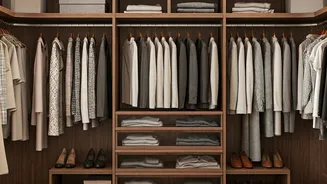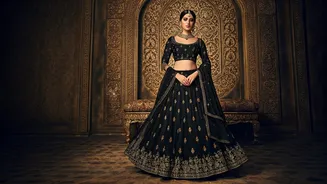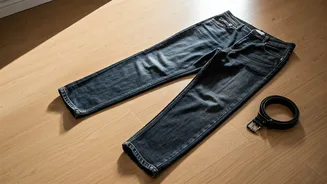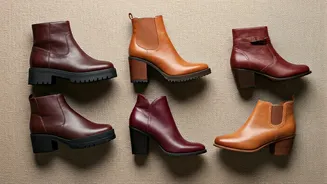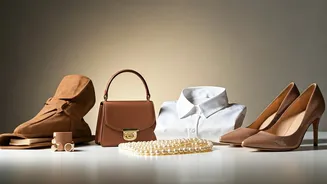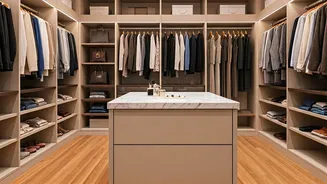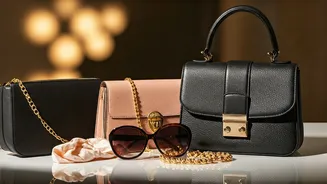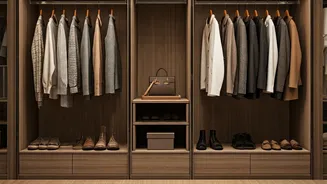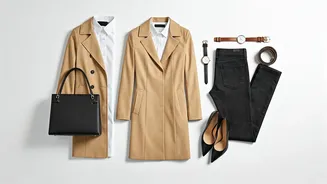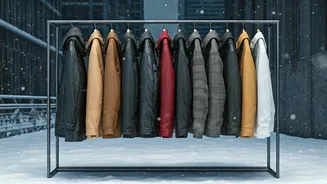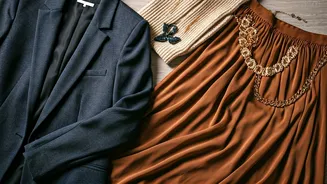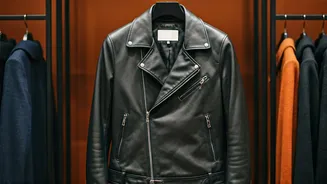Building a Foundation
The cornerstone of great style lies in a solid wardrobe foundation. This isn't about owning the most expensive clothes but rather about curating essential
pieces that work seamlessly together. Start with versatile basics: a well-fitting pair of jeans, a crisp white shirt, a classic blazer, and a neutral-toned sweater. These items serve as building blocks, allowing you to create diverse outfits. Consider quality over quantity, investing in durable fabrics and timeless designs. Ensure each piece fits you well; tailoring is your best friend. Pay attention to the silhouette; ensure it flatters your body shape. Explore neutral color palettes for ease of mixing and matching. Accessorizing with scarves, belts, and jewelry allows you to change the style of an outfit.
Understanding Your Body
Knowing your body shape is vital for creating outfits that flatter. Different silhouettes suit different figures. If you are pear-shaped, opt for A-line skirts and tailored tops to balance your proportions. Apple-shaped figures benefit from empire waists and tailored jackets. Hourglass figures can embrace fitted clothing that accentuates their curves, while athletic builds look great in structured pieces. Take time to analyze your body shape and experiment with different clothing styles to discover what enhances your best features. This involves being honest with yourself and selecting clothes that fit well. Understanding your proportions also matters: consider the length of your legs relative to your torso. This knowledge helps you choose the right clothing lengths, ensuring you can wear both high-waisted and low-waisted options. Tailoring should be considered to create the right fit.
Mastering Color Palettes
Color plays a significant role in creating visually appealing outfits. Understanding color palettes can transform your style. Start by identifying the colors that complement your skin tone. Warm skin tones look great in earthy colors like olive green and rust, whereas cool skin tones shine in jewel tones such as sapphire blue and emerald green. Mastering the art of color coordination will drastically improve your wardrobe. Learning the color wheel is also a good starting point. Understanding complementary colors, analogous colors, and monochromatic schemes enables you to create visually harmonious looks. For those who are new to color mixing, stick to a neutral base – black, white, gray, or navy – and introduce pops of color through accessories or a single statement piece. This allows for safe experimentation and easy coordination. The aim is to create outfits that are stylish and cohesive.
Dressing for Occasions
Adapting your style to suit different occasions will ensure you’re always dressed appropriately. For casual settings, focus on comfort and simplicity. Jeans, T-shirts, and sneakers, or a relaxed dress can work well. For business environments, opt for polished, professional attire. Tailored pantsuits, skirts with blouses, and blazers are great choices. Pay attention to the dress code. Understand the formality level to avoid being underdressed or overdressed. For evening events, consider the event's vibe. Cocktail dresses or elegant separates may work well. The goal is to look stylish and feel confident. Always consider details, like shoes, bags, and accessories, which can elevate any outfit. A well-chosen accessory can also transform a simple outfit into something special, appropriate for the specific occasion.
Accessorizing Effectively
Accessories can truly make or break an outfit. They add personality and flair. Consider them carefully. Start with the basics: a great handbag, a versatile belt, and classic shoes. These are wardrobe staples. Jewelry is another key accessory. Keep the overall look in mind when selecting jewelry; for instance, minimalist jewelry can add a subtle touch. For more formal events, consider statement pieces, but always balance them. The right accessories can also dress an outfit up or down, and enhance your overall presentation. Belts define the waist. Scarves add color. Sunglasses protect and add style. Experimenting with different accessories allows you to create diverse looks from a limited set of clothes. It’s an easy and cost-effective way to update your style.
Developing Personal Style
Developing your personal style is a journey. It involves experimentation, self-awareness, and continuous refinement. Start by gathering inspiration. Look to fashion magazines, style blogs, and influencers. Create a mood board to collect looks and styles that resonate with you. Embrace trial and error. Try new styles. Step outside your comfort zone. Note what works and what doesn't. Your personal style should reflect your personality. It needs to reflect your interests. It should reflect your values. Don't be afraid to break the rules. The most stylish individuals are those who wear their clothes with confidence and individuality. Over time, your personal style will evolve. Embrace your unique style.
